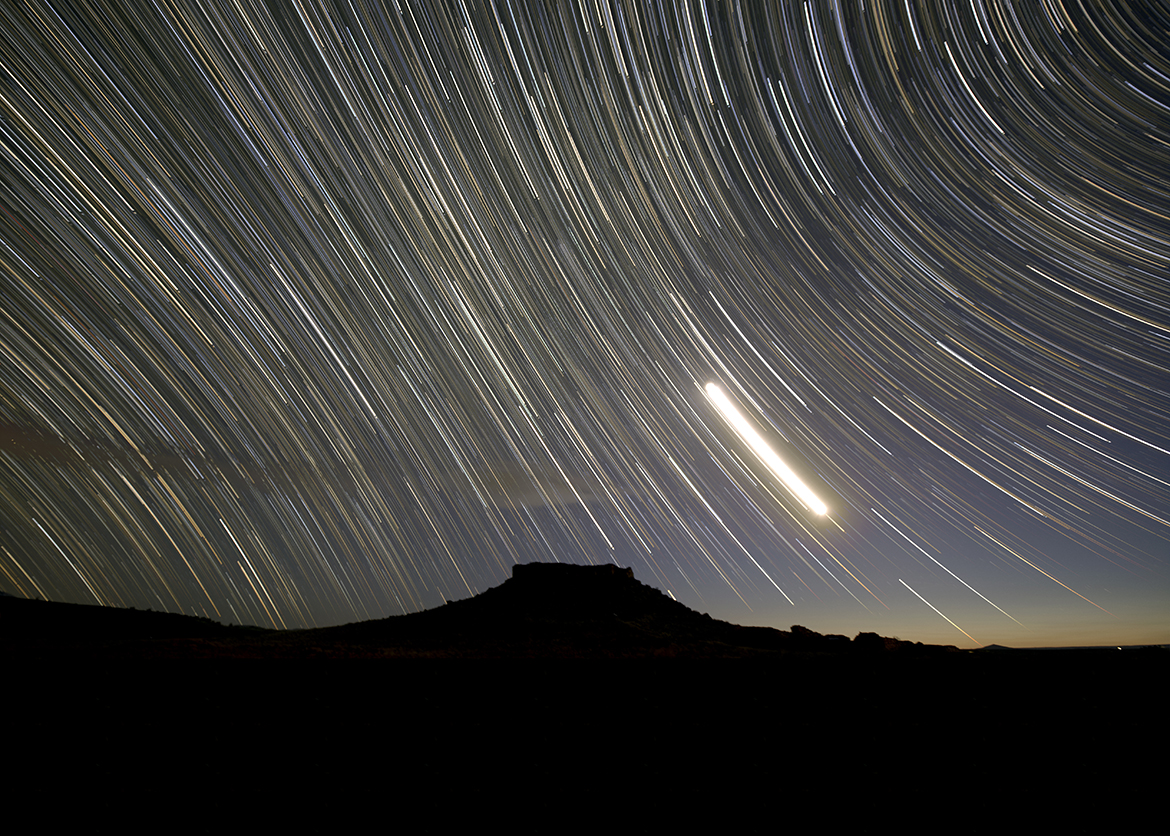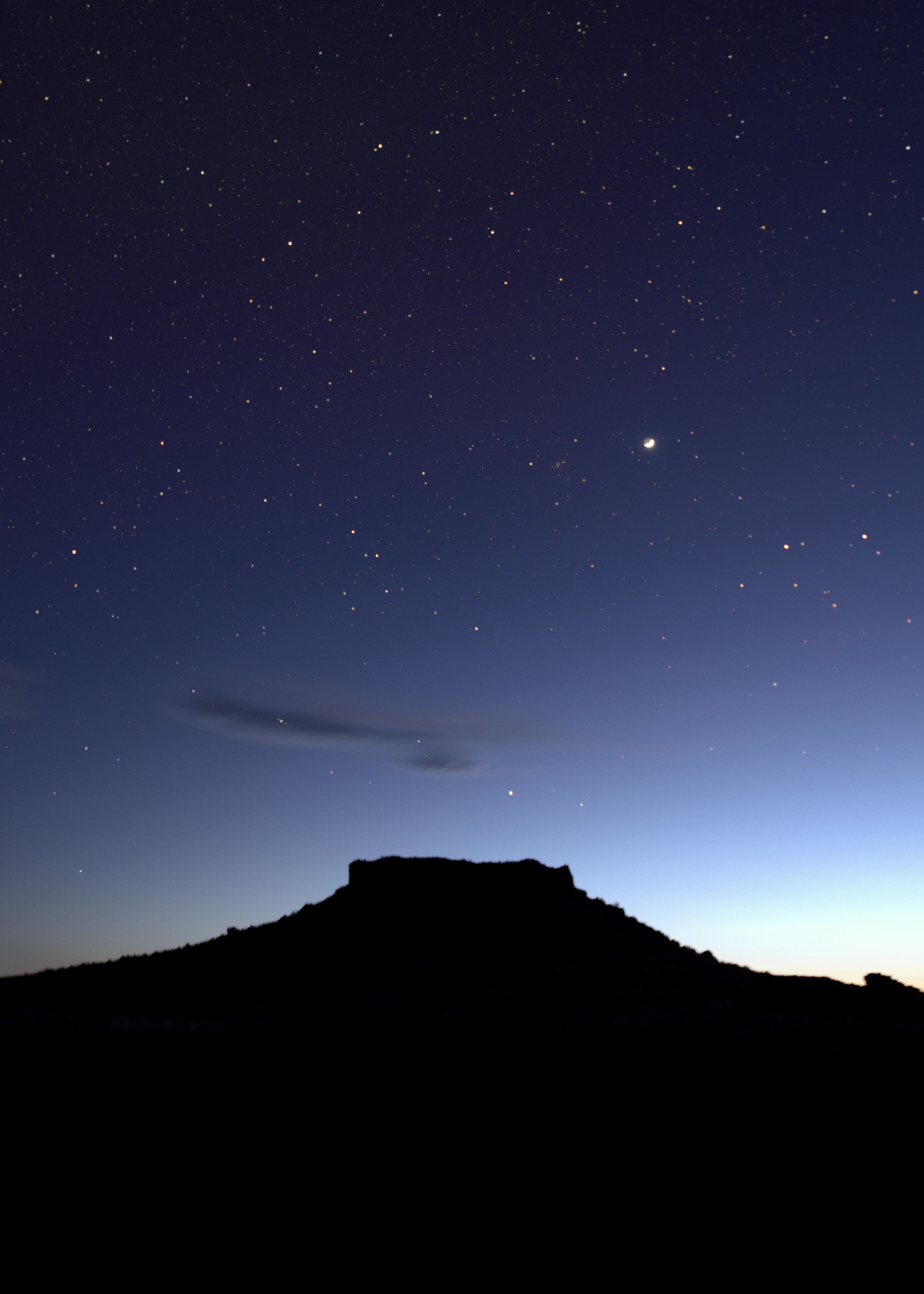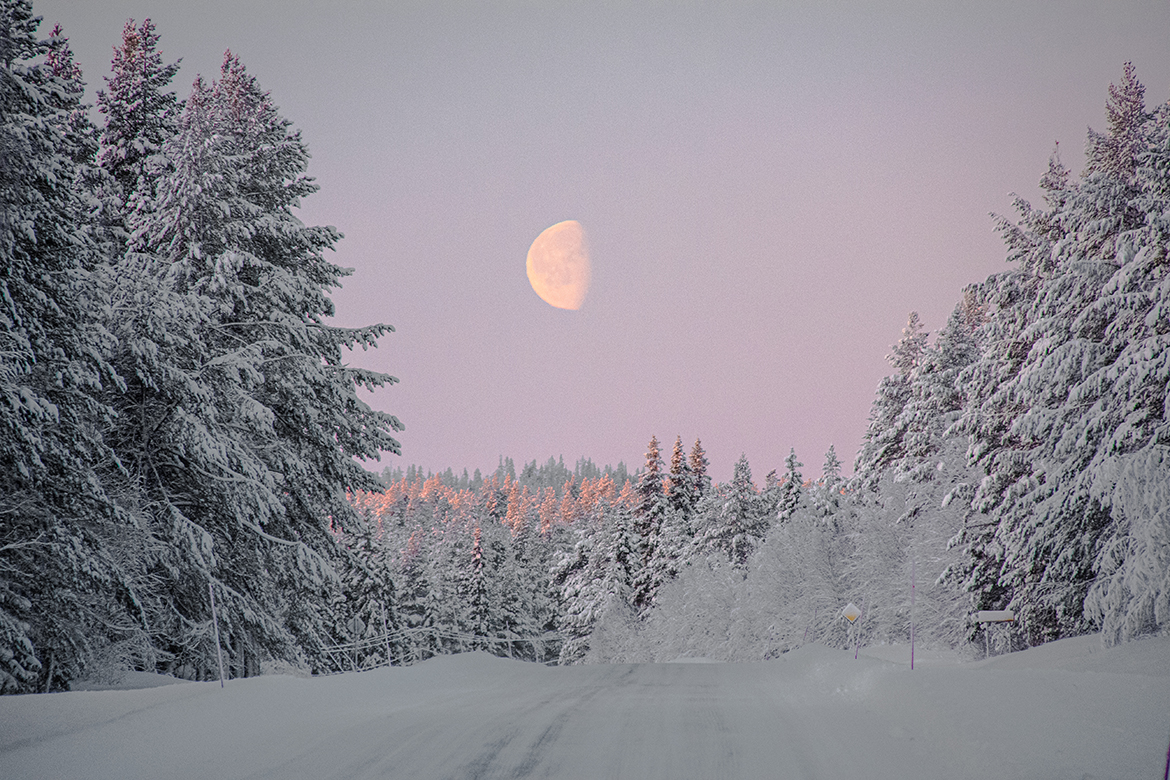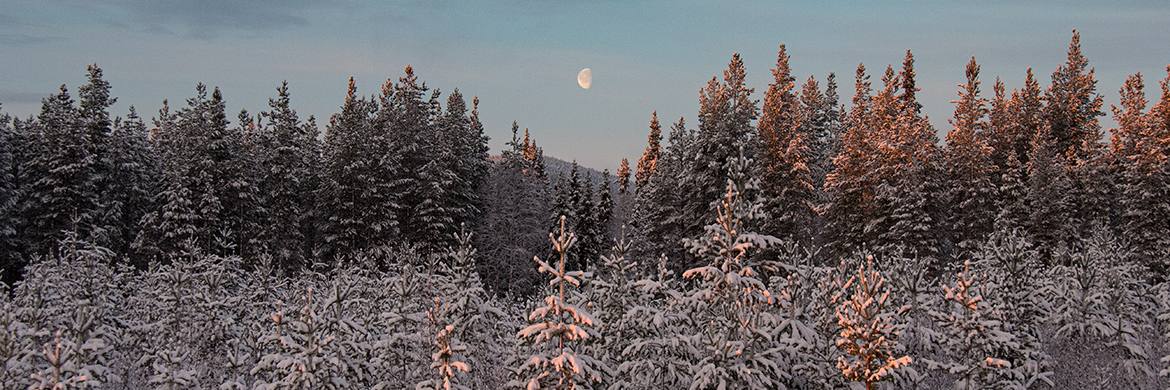
One of the active topics in modern photography is the distinction between “blends” (combining multiple exposures from a single camera viewpoint), and “composites” (which combine unrelated images into a synthetic scene). Both are valid uses of photography, but I prefer to limit my efforts to the former, hoping to reveal some scientific beauty in the result.
In this case the relative motion of the stars is “stacked” (added) from 2,335 10-second exposures. Each frame looks like a normal picture of the sky, but when accumulated creates the star trail effect. The frames were selected from the period after “astronomical twilight” when the sun is more than 18-degrees below the horizon. On this date, official night lasted over six hours, and the star trails cover more than 1/4 of a full circle (and even Polaris shows that it is not exactly on the north celestial pole).
Although it was “night”, it was not completely dark. The moon was up and illuminated the scene until it set around midnight. This allows the foreground to show, including the “sailing stone” with its path on the dry lakebed trailing behind it, a contrast of time scales against the motion of the sky.
A final detail to explain: the streaks below and to the left are the result of trains of Starlink satellites moving across the sky. Dozens of satellites follow each other into and out of the sunlight at their altitude, reflecting it down to our observing position on the playa and creating its own trail on this image.
For more of the backstory on making this image and the next, see “A Night on the Playa – Part 2“.
19 May 2021
Racetrack Playa
Death Valley National Park CA
Canon EOS Ra with EFS 10-22mm
2335 exposures, 8 sec @ f/4, ISO 3200 (6-1/2 hours)
previous | nightscapes index | next









